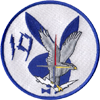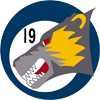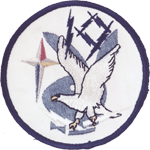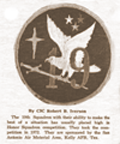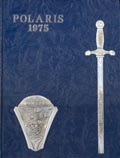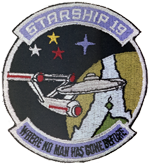"I remember that ’63 was enormously (perversely ??) proud the 19th was labeled “Playboy” squadron, by profs and AOCs, more as a sneering criticism than a compliment – and as a bunch of young stupid noisy teenagers (except Bushnell), we eagerly and proudly adopted the title. A lot of the other squadrons (especially 20th) immediately picked up on the intended criticism/insulting nature of the word and took joy in joining the insults – which of course made us revel it more."
"I vaguely remember the patch on the left, but no memory of who/when. The one on the right was produced by our resident artist/genius, Jim Graham – and as far as I can recall, became our “official” patch if for no other reason, we all shelled out to buy 2 inch cloth version to sew on every thing we could get away with, and then the 1-1/2 inch enameled “brooch” version for those of us goofy enough to wear berets (remember, this was in the John Wayne Special Forces days); I wore mine on my USAFA Survival Instructor Beret with my jump wings, and unfortunately lost my copy of the authorizing letter the Army sent to us specifically authorizing we Instructors to wear their green beret."
"I would observe that the playboy patch development in no way shape or form followed any of the more civilized guidelines or concepts ([Hector] Negroni was 100% correct). And, since ’63 was the loudest voice pushing “playboy,” I think first use of the left-side patch would be spring ’61, and the right side patch spring or fall ’62. I know I was wearing them on anything I could (I complied with Negroni, whom you DID NOT want to cross) spring and summer 1963 (i.e., Special Forces beret during Survival Training instructor tour."
"This is a picture of Dan Kearns in a grubby flight suit, probably after summer ’63 (after our “3rd Lt” tour), in which you can see part of the patch, which clearly shows the “19” matching the configuration of the patch on the left." – Jeff Gordon, Class of 1964 (January 2020)

